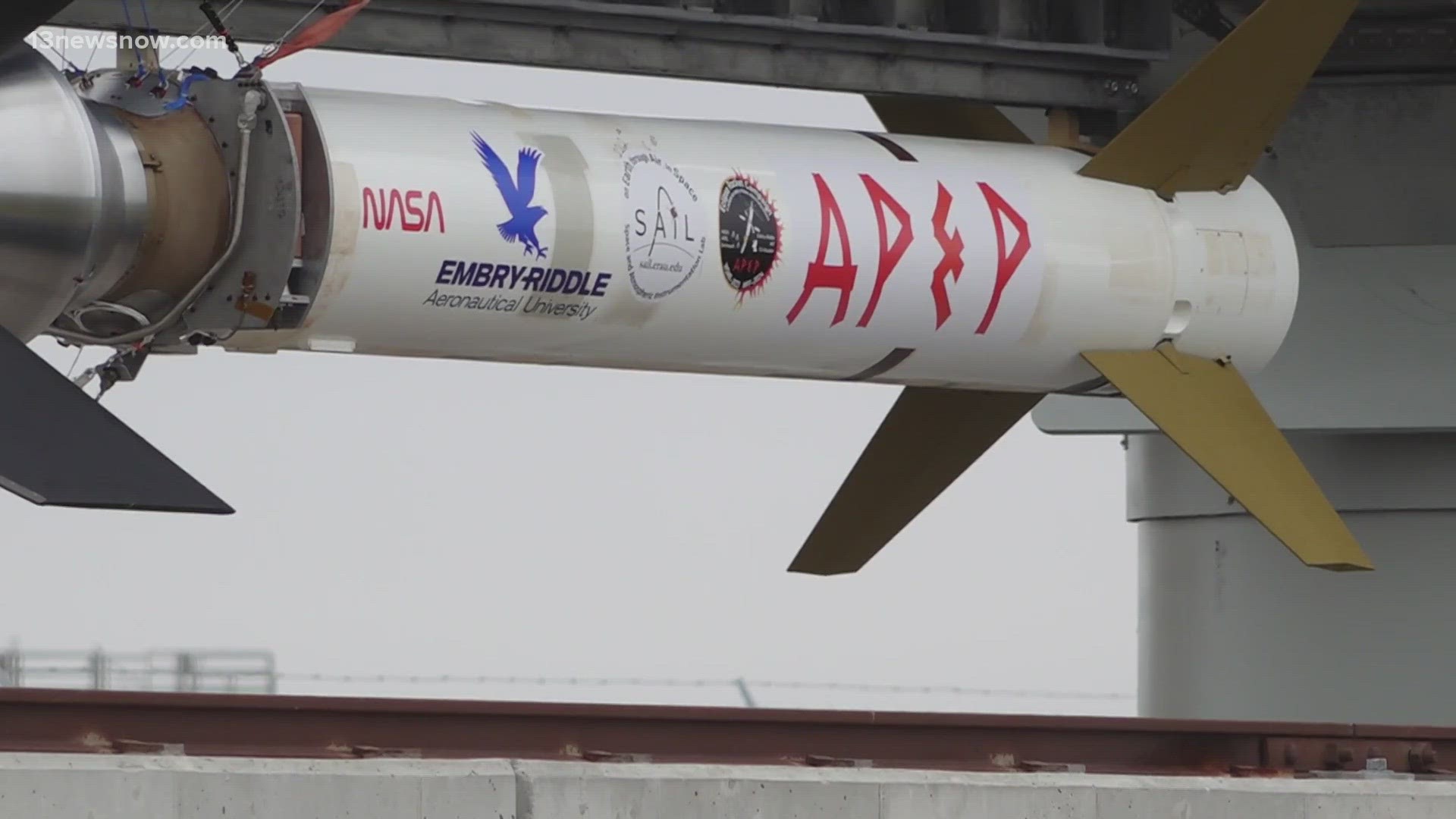VIRGINIA, USA — A space mission taking flight from Virginia next week hopes to uncover the mysteries behind Monday's highly anticipated solar eclipse.
Behind the gates where rockets take flight on Virginia’s Eastern Shore, scientists count down the days to make final adjustments and prepare for their latest Atmospheric Perturbations around Eclipse Path (APEP) Mission.
Since 1963, NASA has launched eight other sounding rocket missions under the APEP Umbrella. Monday’s launch will mark the ninth in total, and the first from the Wallops Island Flight Facility since 1970, aiming to collect data and information about the effects of a solar eclipse on our ionosphere.
“This particular rocket is a total from launch to splash down 600 seconds, about 10 minutes total. The hang time is nine minutes in the parabolic flight, the first 60 seconds first 75 seconds just in the propulsion phase,” Dr. Aroh Barjatya, a professor of engineering physics at Embry-Riddle Aeronautical University and the Principal Investigator for the APEP Mission said.
What is the ionosphere?
The ionosphere is the layer of electrically charged particles situated between Earth and the Sun, overlapping the top of the atmosphere. It’s where radio communications between satellites and the ground travel within this layer at the edge of space.
“With the eclipse, you have this scenario that solar input is removed, so the plasma starts recombining with itself because it’s not getting that energy input,” Nathan Graves, one of the Embry-Riddle Aeronautical University students assisting on the project said.
“Why study the ionosphere? There’s still a lot of phenomena that are not fully understood, we have physics models and computer models, but you don’t get a lot of opportunity to study these regions,” he added.
Max King, campaign manager for the APEP mission on April 8, said the data collected is pivotal in understanding everyday uses like GPS location in our cell phones and more.
“The data is only happening during an eclipse, but the interactions between the sun, atmosphere and communications equipment is relevant all the time. We can have a unique perspective to gather data and understand things during the eclipse, but that kind of information can be relevant all the time.”
Three rockets will depart from the Wallops Flight Facility in Accomack County, which can be visible from locations across the Delmarva coastline including Chincoteague, The Wallops Visitor Center and Ocean City.

